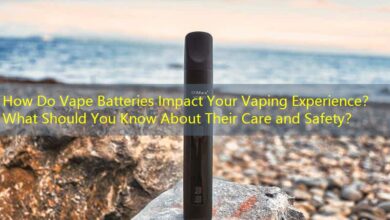Vape Ban Sparks Debate, Is It Time for Change?
The Vape Ban: An Emerging Controversy
In recent years, vaping has become a popular alternative to traditional smoking, particularly among younger demographics. However, the rise of e-cigarettes has sparked a heated debate regarding their safety and regulation. As health officials express concerns over the potential risks of vaping, many governments around the world are considering implementing a
vape ban
. This article explores the implications of such bans, their rationale, and the ongoing clash between public health objectives and personal freedoms.
Understanding the Vape Controversy
Vaping involves inhaling vapor produced by an electronic device that heats a liquid, commonly containing nicotine, flavorings, and other chemicals. While proponents argue that vaping is a safer alternative to smoking, critics point to rising cases of respiratory illnesses attributed to vape use, particularly among teenagers. The Centers for Disease Control and Prevention (CDC) has noted a concerning increase in vaping-related lung injuries, raising alarms among public health experts.

Reasons Behind the Vape Ban
The primary motivation behind the
vape ban
is the increasing health risks associated with vaping. Regulatory bodies emphasize the protection of young people, who are particularly vulnerable to nicotine addiction. Numerous studies indicate that vaping can serve as a gateway to traditional smoking, with adolescents who use e-cigarettes more likely to transition to combustible cigarettes.

Another significant concern is the unregulated nature of many vaping products. Unlike traditional tobacco products, e-cigarettes often contain unknown quantities of nicotine and other harmful substances. Bans are seen as necessary to manipulate the availability of these products to safeguard public health.
Case Studies: The Global Response
Different countries have approached vaping regulation in various ways. For example, New Zealand has instituted a comprehensive regulatory framework to manage the sale and advertising of vaping products, aiming to reduce smoking rates while promoting safer alternatives. Meanwhile, countries like India have implemented outright bans on the sale of e-cigarettes, citing public health concerns.
In the United States, state-level responses vary widely. Some states, such as Michigan, have enacted temporary bans on flavored vape products, while others have taken a more laissez-faire approach. To illustrate these variations, consider the following table comparing state responses:
| State | Type of Ban | Effectiveness Rating |
|---|---|---|
| Michigan | Temporary Flavor Ban | Moderate |
| California | No state-level ban | Low |
| New York | Flavor Ban in Retail | High |
The Debate on Personal Freedom
While public health concerns drive the
vape ban
, advocates of vaping often express the belief that adults should have the right to choose how they consume nicotine. They argue that vaping provides a relatively safer alternative for current smokers looking to quit. Furthermore, several studies indicate that e-cigarettes could be less harmful than traditional cigarettes when used as part of a smoking cessation plan.
Critics of vape bans emphasize the importance of education and regulation over outright bans. They posit that access to safer products should remain available to those seeking alternatives to smoking. This perspective fosters a debate surrounding the balance between individual rights and collective health.
Public Reactions and Ongoing Discussions
Public reaction to vape bans has been mixed, with some supporting stringent regulations while others vehemently oppose them. Advocacy groups representing both sides have intensified their campaigns, influencing policymakers and public perception. Engaging with the community and understanding different viewpoints is critical in developing effective public health strategies.
Additionally, misunderstandings surrounding the safety and use of vaping products often contribute to heightened tensions in the debate. As more research emerges, better public education could help facilitate informed discussions on the benefits and risks of vaping.
Questions and Answers
What are the health risks associated with vaping?
Vaping can lead to various health risks, including nicotine addiction, lung injuries, and potential long-term respiratory issues. The exact risks depend on the ingredients in the vape product, with some containing harmful substances.
How can I purchase vaping products legally?
The legality of purchasing vaping products varies by location. It is essential to check local laws and regulations, as some states or countries may have imposed bans or restrictions on specific products or flavors.
What alternatives exist for smokers looking to quit?
Alternatives for those looking to quit smoking include nicotine replacement therapies like patches and gums, prescription medications, and support programs designed to assist in smoking cessation.
This rapidly evolving issue continues to challenge existing norms and poses questions that society must grapple with. Educating the public and fostering informed discussions will be vital in navigating the future of vaping and its regulation.




